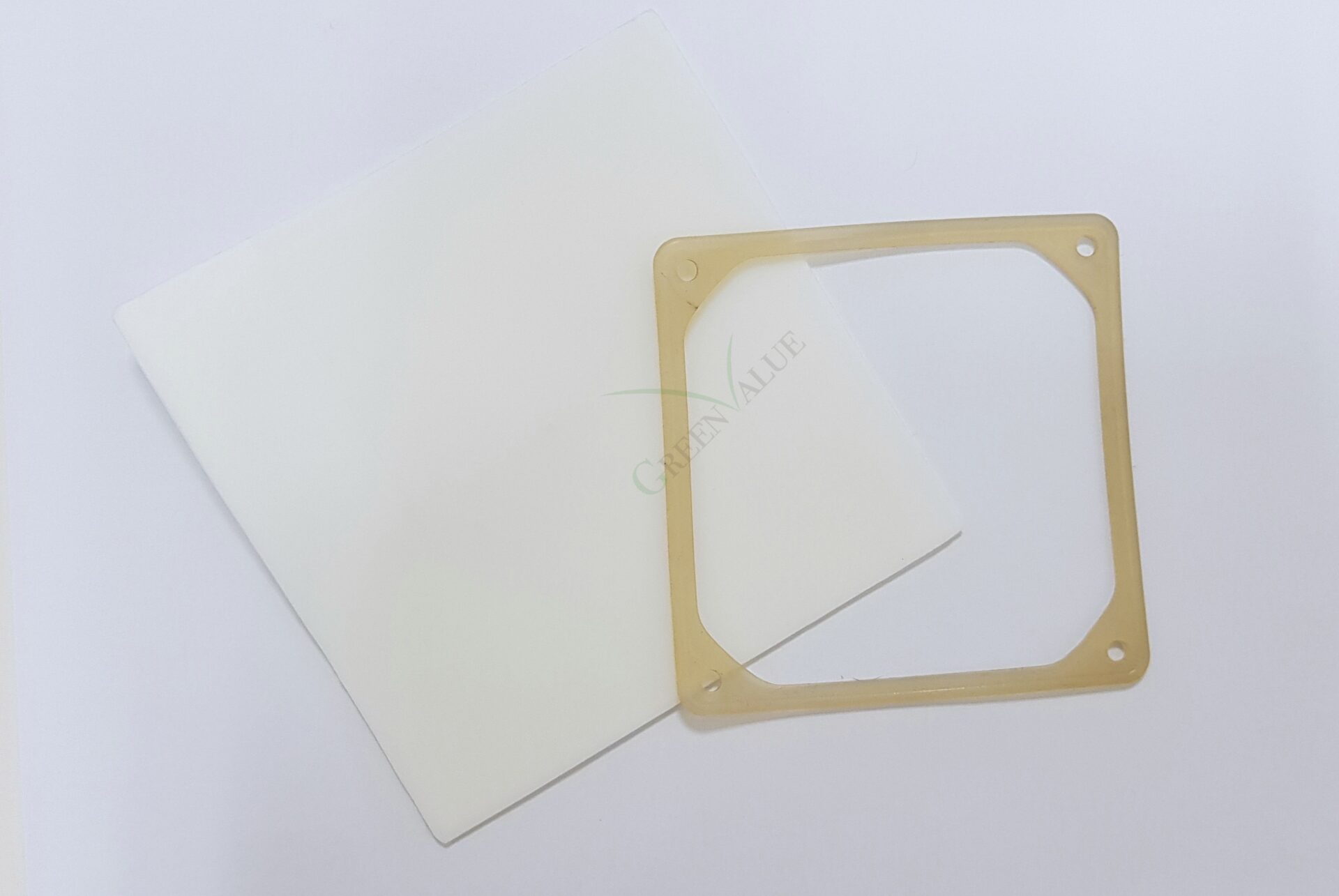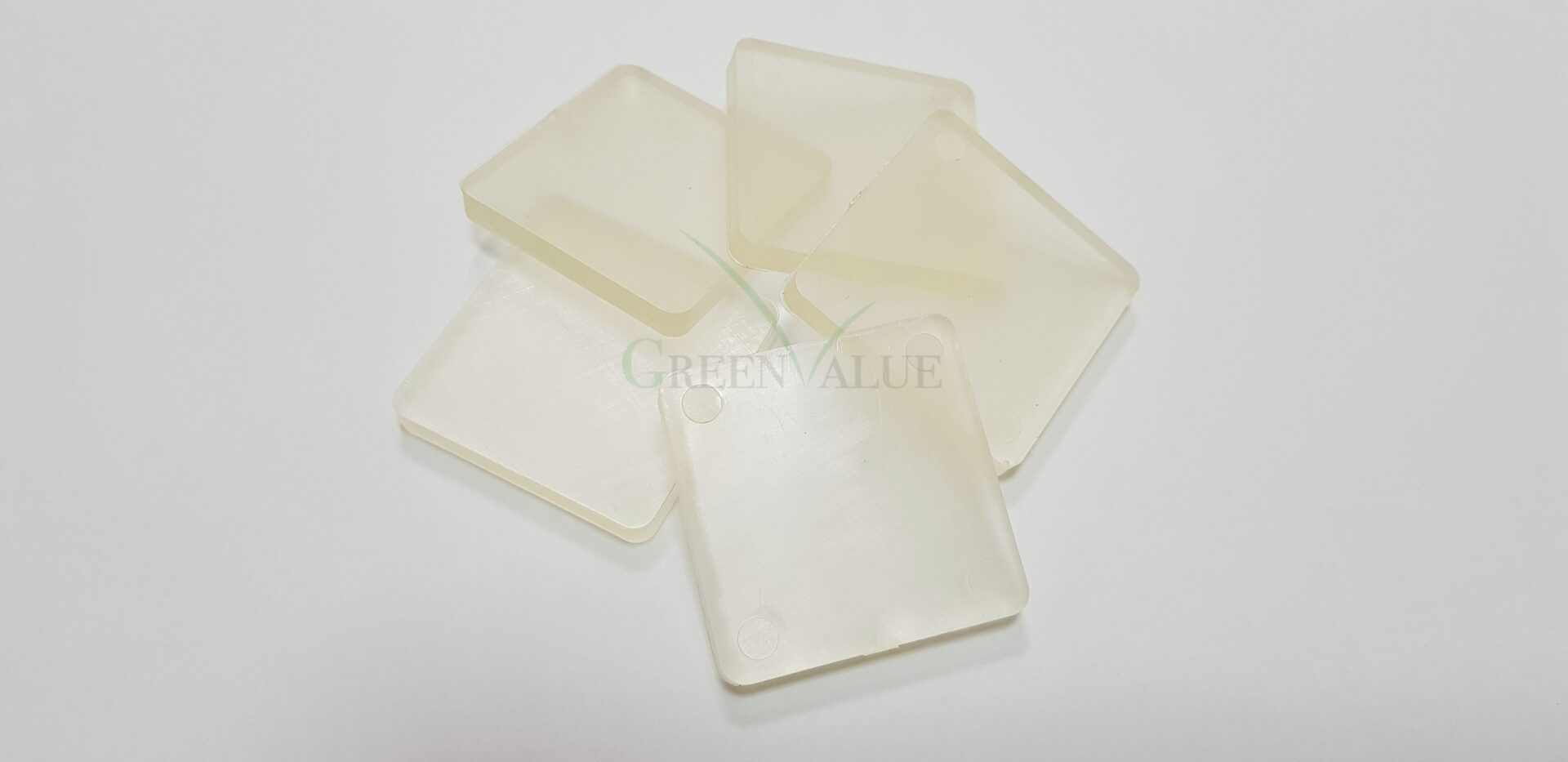
Thermoplastic elastomer (TPE), as its name implies, is a material that is flexible at room temperature; in the meantime can be melted and cooled in a mold like plastic. Therefore, it has the properties of both plastic and rubber materials. Traditionally, rubber materials are thermosetting polymers, which are plasticity like dough under room temperature. When heated in a mold, the rubber materials will begin to undergo a vulcanization reaction (or cross-linking reaction). After a specific heating temperature and forming time, the rubber material will complete most of the vulcanization reaction, and the cooled rubber product remains flexible (i.e., it can recover after bending, bending, stretching, etc.) Since rubber is a thermoset material, defective products or recycled rubber materials cannot turn back into flow status after being heated, which also makes it difficult to recycle.
On the contrary, the plastics are thermoplastic polymers, which are solid particles at room temperature and show a liquid state after being heated at high temperatures. There is no chemical reaction between the molecules during this process. The material absorbs the heat value and converts into the KE of the molecules to provide material flow. When cooled in the mold, the desired product can be shaped. Also, the defective plastic or recycled material can be reheated into a liquid that can be cooled and formed into a new product afterward. However, most plastic materials are not flexible, which has led to the development of thermoplastic elastomeric materials (TPE).
TPE is a material that lies between the properties of plastic and rubber, with the main requirement being rubber-like elasticity, but can be melted and molded just as traditional plastics do. With the advantage of being recyclable, there has been an increasing demand for TPE from different OEMs who cares about the environment these days. Properly speaking, TPE is a general term for thermoplastic materials and belongs to one of the plastics family and differs more from rubber (since rubber is a thermoset polymer). TPE can be subdivided into six major categories, TPS, TPEE, TPU, TPV, TPO, and TPA. We will have a brief introduction below.
- TPS (Thermoplastic Styrene). The main products in the market are hydrogenated SBS and SEBS. The S stands for styrene monomer, and B stands for butadiene monomer, which can be obtained after polymerization. The advantages are high elongation and easy processing, while the disadvantages are weak abrasion resistance and poor oil resistance.
- TPEE (Thermoplastic Polyester Elastomer). The main product on the market is DuPont’s Hytrel®. It is mainly obtained by the shrinking and polymerization of diacid and diol. The properties of TPEE can be adjusted by the portion of polyester diol and polyether diol. The main advantages of TPEE are excellent heat resistance, solvent resistance, and low-temperature bending. The disadvantages are high hardness and the processing temperature requiring more precise control to obtain the right product.
- TPU (Thermoplastic Polyurethane Elastomer). The primary raw materials of TPU are diol and diisocyanate. Depending on the type diols using, TPU is available as either polyether TPU or polyester TPU. Polyester type TPU has better solvent and heat resistance, but less hydrolysis resistance. The opposite is exact for the polyether type. In practice, TPU is most often compared to TPEE when choosing materials. TPEE is more expensive but more suitable for snow sports parts, car dust covers (temperature and oil resistant). On the other hand, TPU is widely used as a component of sports equipment due to its best abrasion resistance among TPEs.
- TPV (Thermoplastic Vulcanizate). The elastomeric products are compounded by cross-linking plastic, uncross-linked rubber, and vulcanization aids through a reactive twin-screw extruder at high temperature; meanwhile, the rubber particulates from the cross-linked reaction are effectively dispersed into the plastic. In practice, most of the plastics are used PP, while rubbers are chosen EPDM. Since TPV is mixed with polymer while reacting, it is critical to control the process parameters so that the TPV properties can be stable after the reaction. Due to its good oil resistance, heat resistance, weather resistance, and low compressive deformation, coupled with recyclable melt reuse, the market share of TPV materials in automotive parts have gradually increased in recent years. However, the high price and poor abrasion resistance can be the main drawback.
- TPO (Thermoplastic Polyolefin Elastomer). TPO elastomers are more widely defined and can be polymerized with ethylene or propylene by introducing long carbon chains of octene in the synthesis process. It is also possible to physically mix PP, PE plastic, and EPDM rubber in a double screw extruder after melted under high temperature. The main advantages of TPO are small specific density, low price, good ozone resistance, and easy processing. Still, the disadvantages are not resistant to non-polar solvents; poor wear resistance and rebound, as well as high compression permanent deformation rate. Thus, it depends on the environment used by the end product to determine whether TPO is applicable or not.
- TPA (Thermoplastic polyamide elastomer). Traditionally, the reactions of the COOH acid functional group and NH amine functional group are called NHCO. Nylon 6 and nylon 66 are the most common products. They are obtained by combining TPA with ester and ether diols first, then polymerizing them with caprolactam and diacids. TPA inherits the strength, heat resistance, oil resistance, low-temperature resistance, and other advantages of polyamide material. However, the drawbacks are received as well: inadequate heat and water resistance, discoloration during high-temperature processing, and the highest price of thermoplastic elastomers. As a result, TPA is only used when customer-preferred in most cases. The market pioneer is Arkema, a French company.
Ask for a quote: TPE products, TPS products , TPEE products, TPU bushings, TPU products, TPV products, TPO products, TPA products


